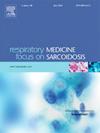Comparison of the sensitivity and specificity of bronchiolitis severity scores in infants: a systematic review and meta-analysis
IF 3.5
3区 医学
Q2 CARDIAC & CARDIOVASCULAR SYSTEMS
引用次数: 0
Abstract
Background
Respiratory syncytial virus (RSV) represents the most common cause of acute respiratory hospitalization in children <24 months of age. Several clinical scores have been proposed to estimate disease severity.
Objective
This study aims to compare the sensitivity and specificity of clinical scores assessing the severity of bronchiolitis in children <2 years old.
Methods
PubMed, Scopus and Web of Science databases were approached to identify all studies published before 31st December 2024 using bronchiolitis severity scores and providing data regarding their sensitivity and specificity.
Results
At the end of the selection process, 18 studies evaluating 13 clinical severity scores were analysed. A total of 6552 children (weighted mean age 5.1 months – range 0–24 months) with a diagnosis of bronchiolitis were included. The summary ROC analysis demonstrated that the GRSS (Global Respiratory Severity Scale) performed better than other scores in discriminating children at risk for severe disease. In particular, the GRSS showed cumulative sensitivity and specificity values of 0.87 (95 %CI: 0.80–0.92) and 0.92 (95 %CI: 0.88–0.95) respectively, with elevated accuracy (0.90).
Limits
We limited our analysis only to studies reporting specificity and sensitivity values, possibly excluding other validated scores, but we aimed to perform a balanced analysis involving the most possible homogenous population.
Conclusions
There is limited but moderate-to-adequate evidence that the GRSS score has better sensitivity and specificity for clinically assessing the severity of bronchiolitis in infants and children <2 years old. However, further studies are needed to validate these results, ideally using larger datasets.
婴儿细支气管炎严重程度评分的敏感性和特异性的比较:一项系统回顾和荟萃分析
背景:呼吸道合胞病毒(RSV)是24月龄儿童急性呼吸道住院的最常见原因。已经提出了几种临床评分来估计疾病的严重程度。目的比较两岁儿童毛细支气管炎严重程度临床评分的敏感性和特异性。方法采用spubmed、Scopus和Web of Science数据库,对2024年12月31日前发表的所有研究进行细支气管炎严重程度评分,并提供敏感性和特异性数据。结果在选择过程结束时,对18项研究进行了分析,评估了13项临床严重程度评分。共纳入6552名诊断为毛细支气管炎的儿童(加权平均年龄5.1个月-范围0-24个月)。摘要ROC分析表明,GRSS(全球呼吸严重程度量表)在区分严重疾病风险儿童方面优于其他评分。特别是,GRSS的累积敏感性和特异性值分别为0.87 (95% CI: 0.80-0.92)和0.92 (95% CI: 0.88-0.95),准确性提高(0.90)。我们的分析仅限于报告特异性和敏感性值的研究,可能排除了其他经过验证的评分,但我们的目标是在最可能的同质人群中进行平衡分析。结论GRSS评分在临床评估婴幼儿及2岁儿童细支气管炎严重程度方面具有较好的敏感性和特异性,证据有限,但有中等到充分的证据。然而,需要进一步的研究来验证这些结果,最好使用更大的数据集。
本文章由计算机程序翻译,如有差异,请以英文原文为准。
求助全文
约1分钟内获得全文
求助全文
来源期刊

Respiratory medicine
医学-呼吸系统
CiteScore
7.50
自引率
0.00%
发文量
199
审稿时长
38 days
期刊介绍:
Respiratory Medicine is an internationally-renowned journal devoted to the rapid publication of clinically-relevant respiratory medicine research. It combines cutting-edge original research with state-of-the-art reviews dealing with all aspects of respiratory diseases and therapeutic interventions. Topics include adult and paediatric medicine, epidemiology, immunology and cell biology, physiology, occupational disorders, and the role of allergens and pollutants.
Respiratory Medicine is increasingly the journal of choice for publication of phased trial work, commenting on effectiveness, dosage and methods of action.
 求助内容:
求助内容: 应助结果提醒方式:
应助结果提醒方式:


